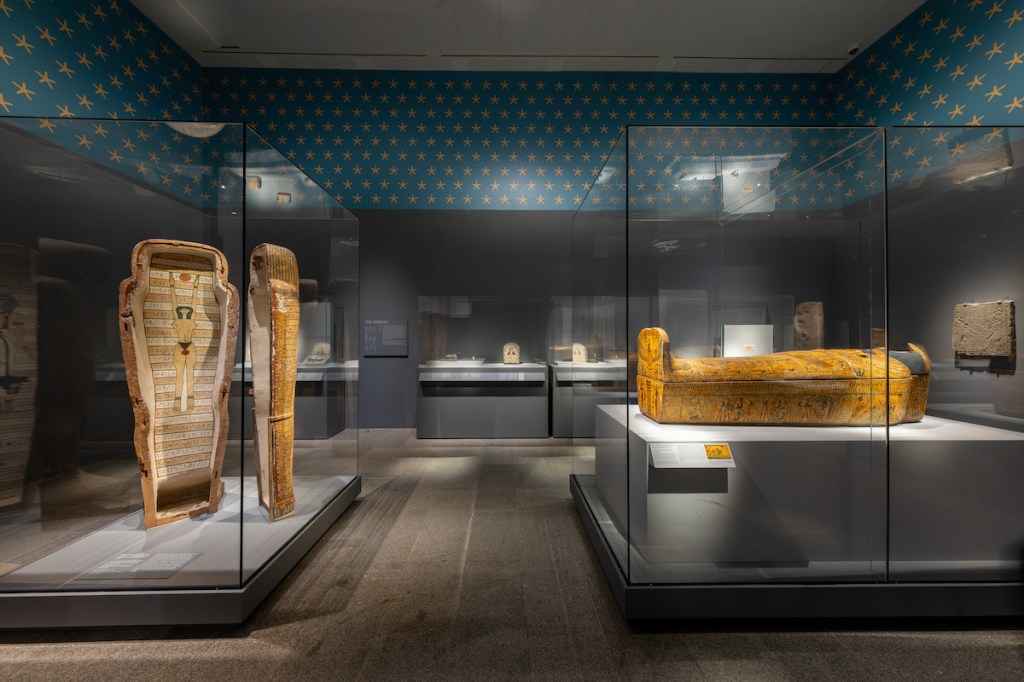With about 210 works included, “Divine Egypt” is the largest exhibition devoted to ancient Egyptian art in over a decade at the Metropolitan Museum of Art, the venerable New York institution that is famous for its shows devoted to that area of art history. It’s an unusual kind of blockbuster, however, in which the smaller works steal the show away from monumental statues on loan from international institutions. (The Met itself owns around 140 of the pieces in the show.)
Curated by Diana Craig Patch, working with Brendan Hainline, the show explores how Egypt’s artisans depicted the 1,500 gods their people worshipped, focusing on roughly 25 of these deities. Across the amulets, sarcophagi, statues, and mummies surveyed, two things become obvious. One is that these gods were shapeshifters, in more sense than one, for their form changed depending on who was depicting them. Another is that the gods were just as strange then as they appear now.
Read a full review of the show here.


The new Met show features stunning loans, including a statue of King Haremhab and Horus that has traveled all the way from the Kunsthistorisches Museum in Vienna.


A section of the show features painted coffins, including some from the Met’s collection.


Maat, the goddess depicted here, embodied the concept of maat, a combination of ideas related to righteousness and justice.


Thoth, a divine scribe and healer, is commonly depicted with the head of an ibis. His pose, with one foot set before the other, is one that reappears throughout ancient Egyptian art.


A giant quartz diorite sculpture of a scarab (at center) is one of the show’s stars. It symbolizes Khepris, god of the morning sun.


This fragment, which the curators say belonged to one of the earliest known monumental statues, represents Min, god of fertility. He once appeared with an erect phallus that has since been snapped off.


“Divine Egypt” shows how various cultures translated and retranslated established iconographies in many forms.


The closes out on this statuette of a seated Osiris posed between Horus and Isis. Cast in dramatic lighting, it appears to gleam in an otherwise darkened gallery.

